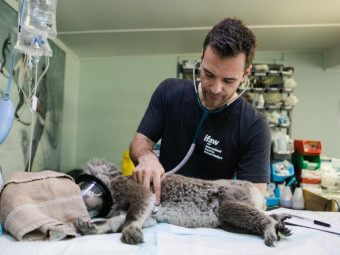World Of Computer Networking
Learn everything about Internet - Ethernet, IP, Routing, Switching, TCP, UDP, NAT, DHCP and DNS, prepare for CCNA exam
Last updated 2022-01-10 | 4.6
- How Computer Network operates on different layers of the What are TCP/IP and OSI model- Logical and hardware addressing of the devices (IP addresses and MAC addresses)
- IP addressing
- Network masks
- Subnets and Subnetting
What you'll learn
* Requirements
* Just your computer or mobile phone* Be ready to learn Computer Networking with me!
Description
I have CCIE (Cisco Certified Internetwork Expert) certificate that is most recognisable Computer Network certification in the world and I know about Computer Networks a lot. In this course I share my knowledge about KEY and MOST IMPORTANT features of the Computer Networks. No obsolete info!
Also I've taught hundreds of students in person in classes because during 7 years I was working as Cisco Certified Systems Instructor (CCSI).
This course is all about Computer Networking and Internet.
Understand HOW Computer Networks work and learn key Networking Protocols
Ethernet, IPv4, IPv6, TCP, UDP, NAT, DHCP, DNS, private and public IP addresses, subnetting
If those terms are new to you - jump in and you will learn all about them with help of multiple easy-to-grasp diagrams and using multiple practice activities. Most practice activities require just your computer and program called Wireshark.
It helps to perform analysis of different protocols and TCP/IP layers headers.
Become a master of Computer Networking!
If you prepare for the CCNA (Cisco Certified Network Associate) exam, this course is a perfect start for you!
This is the most complete Computer Networking Guide here on Udemy that includes tons of practical activities. You could have zero knowledge about Computer Networking. All will be taught from scratch, from basic to advanced features. If you want to get deep knowledge of Computer Networking this course is for you!
We will start by taking about TCP/IP and OSI models. This knowledge is required in order to understand how different hosts communicate with each other and that all communication processes are strictly defined. This is like languages that people need to use to be able to understand each other.
Next starting from the Physical layer (bits and bytes) we will move to Data Link layer (Ethernet, MAC addressing and Switching). Next layer will be Network (Routing, IPv4, IPv6, subnetting, network masks, IP addressing, ARP, ICMP). On Transport layer we will discuss in details TCP and UDP protocols and their purpose. On Application layer I will tell you about such important protocols as DHCP and DNS that your computers and mobile phones use very often. Also I will tell you difference between private and public IP addresses and purpose of the NAT.
You will also learn how DNS(core of the hierarchical naming structure in the Internet) works and how resolution of each domain name to the IP address happens by involving DNS root nameservers, TLD nameservers and authoritative nameservers.
Also it's important to know how routers in the Internet build their routing tables and make routing decisions. That's why I decided to explain you some details about BGP - global routing protocol.
In practice sections you will perform multiple practice Networking activities:
Install Wireshark and use it for analysis of the networking protocols
Analyse Ethernet headers
Understand how DCHP requests and responses help to get IP address assigned to the host
Analyse structure of the IPv4 header
Practice subnetting
Examine ARP cache
Explore IP, DHCP and NAT settings of the Wireless Router
Use nslookup utility to perform DNS and reverse DNS lookups with queries for different types of the DNS records (A, AAAA, TXT, MX)
Analyse TCP and UDP headers
Check information about domain names, public IP addresses and ASNs (Autonomous System Numbers)
List of the Course Sections and Topics:
Introduction to the Computer Networking
TCP/IP and OSI Models
Bits and Bytes
Ethernet
Network Characteristics
Switches and Data Link Layer
Routers and Network Layer
IP Addressing and IP Packets
Networks
Binary Math
Network Masks and Subnetting
ARP and ICMP
Transport Layer - TCP and UDP
Routing
Network Address Translation
DHCP and DNS
During this course you will use following Applications to perform different practical activities and analysis of the Protocols and Applications:
Wireshark
Terminal
Web Browser
With this course you will get lifetime-long access to almost 200 lectures and tens of practical exercises. After the course you will become a guru of Computer Networking and will be able easily explain what happens when two hosts communicate in the Internet.
But most important is that you will UNDERSTAND how Computer Networks work.
You will also get 30-days money-back guarantee. No questions asked!
Don't wait and join the course now!
Who this course is for:
- Anyone who want to get fundamental knowledge about Computer Networking and network devices
- Computer Network Professionals
- Software developers
- DevOps engineers
Course content
17 sections • 197 lectures








 This course includes:
This course includes:













